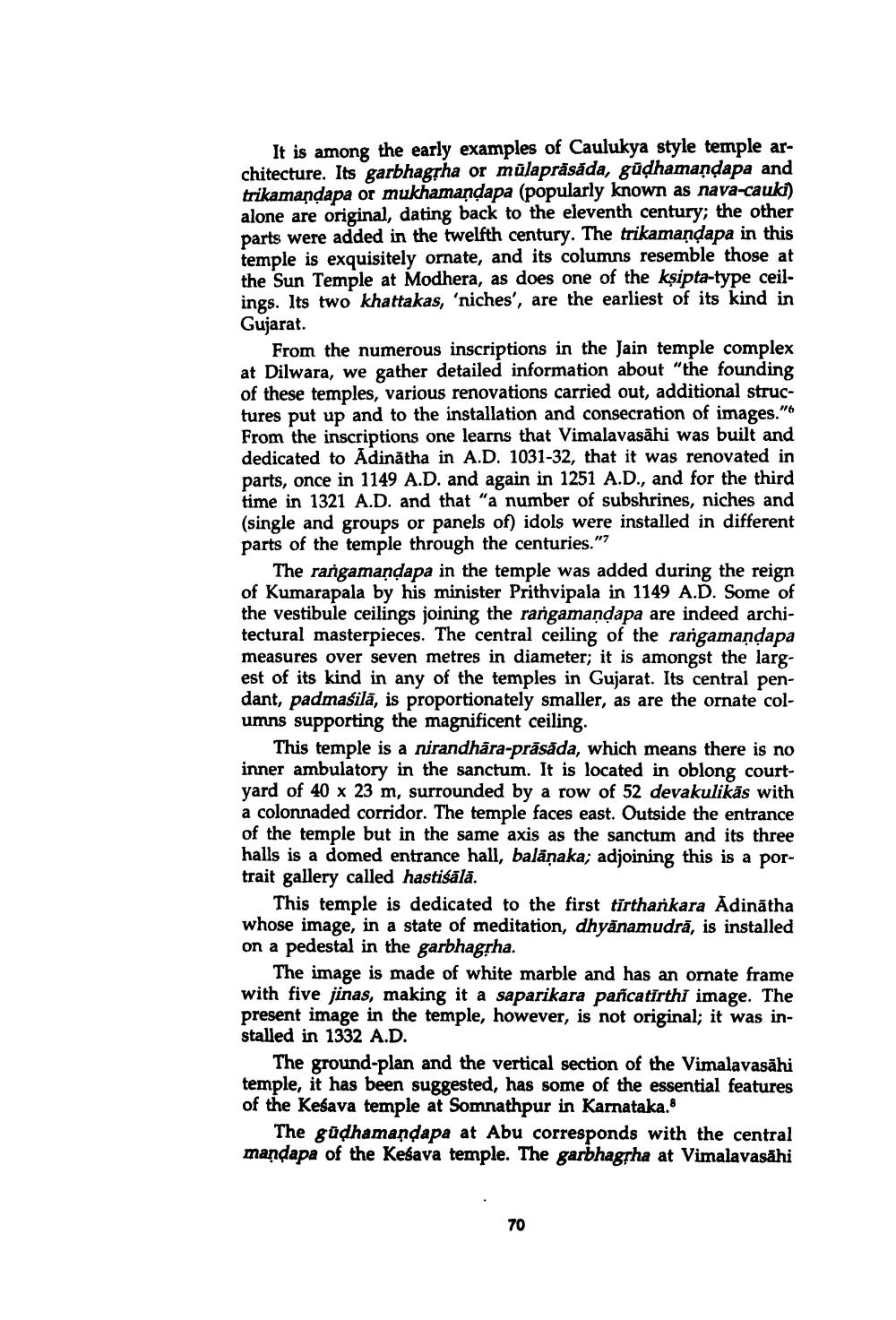________________
It is among the early examples of Caulukya style temple architecture. Its garbhagrha or mūlaprăsăda, güdhamandapa and trikamandapa or mukhamandapa (popularly known as nava-cauki) alone are original, dating back to the eleventh century; the other parts were added in the twelfth century. The trikamandapa in this temple is exquisitely ornate, and its columns resemble those at the Sun Temple at Modhera, as does one of the kşipta-type ceilings. Its two khattakas, 'niches', are the earliest of its kind in Gujarat.
From the numerous inscriptions in the Jain temple complex at Dilwara, we gather detailed information about "the founding of these temples, various renovations carried out, additional structures put up and to the installation and consecration of images."6 From the inscriptions one learns that Vimalavasāhi was built and dedicated to Adinātha in A.D. 1031-32, that it was renovated in parts, once in 1149 A.D. and again in 1251 A.D., and for the third time in 1321 A.D. and that "a number of subshrines, niches and (single and groups or panels of) idols were installed in different parts of the temple through the centuries."
The rangamandapa in the temple was added during the reign of Kumarapala by his minister Prithvipala in 1149 A.D. Some of the vestibule ceilings joining the rangamandapa are indeed architectural masterpieces. The central ceiling of the rangamandapa measures over seven metres in diameter; it is amongst the largest of its kind in any of the temples in Gujarat. Its central pendant, padmašilā, is proportionately smaller, as are the ornate columns supporting the magnificent ceiling.
This temple is a nirandhāra-prāsāda, which means there is no inner ambulatory in the sanctum. It is located in oblong courtyard of 40 x 23 m, surrounded by a row of 52 devakulikās with a colonnaded corridor. The temple faces east. Outside the entrance of the temple but in the same axis as the sanctum and its three halls is a domed entrance hall, balāņaka; adjoining this is a portrait gallery called hastiśālā.
This temple is dedicated to the first tirtharkara Adinātha whose image, in a state of meditation, dhyānamudrā, is installed on a pedestal in the garbhagsha.
The image is made of white marble and has an ornate frame with five jinas, making it a saparikara pañcatirthi image. The present image in the temple, however, is not original; it was installed in 1332 A.D.
The ground-plan and the vertical section of the Vimalavasāhi temple, it has been suggested, has some of the essential features of the Keśava temple at Somnathpur in Karnataka.
The gūdhamandapa at Abu corresponds with the central mandapa of the Keśava temple. The garbhagpha at Vimalavasāhi
70




